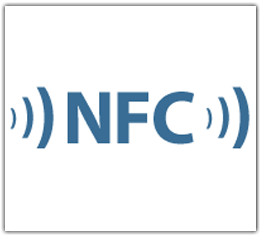The week before last I participated in a conference on mobile payment technologies. I expected to find out more about Square and other startups that have begun to revolutionize credit card acceptance by solo businesses like food trucks. What I learned instead is that this nascent industry is way bigger than the emerging near-field communications (NFC) protocol Apple unexpectedly did not include in its new iPhone 5. More surprisingly, it seems the biggest attraction for inventors and investors isn’t the payment transactions themselves at all.
Some take-aways:
- A bunch of different technologies are competing at the standards/platform level for mobile payment processing. These include EMV, Isis and TSM, as well as NFC. A major driver in adoption is that new ventures are cutting deals with point-of-sale (POS) equipment vendors to integrate their protocols into the next software updates for these ubiquitous checkout devices. The biggest barrier to adoption is security and PCI compliance.
- Many of the largest U.S. retailers (7-Eleven, Walmart, Sears, Best Buy, etc.) have teamed up in a joint venture called MCX, which has yet to decide on a common approach to use of smartphones as payment devices. By virtue of their ubiquity, the MCX players may have the scale to make their selection of mobile payment technology an inflection point in this transformation.
- The advantage of mobile payments to retailers is not simply allowing consumers a convenient way to make purchases. Rather, it is the Holy Grail of demographic, time and location information allowing Location Based Marketing (LBM) in the “last three feet.” By capturing GPS-enabled location data, using wireless geofencing to engage in push/pull marketing interactions — think shopkick and the like (disclaimer: shopkick has been a client of mine) — and mining that data, mobile payment companies will know more about consumer preferences and behavior than SKU-level retailers or the major credit card processors like Visa and MasterCard.
This presents some interesting questions from a business and social perspective. Will and should the same liability approach used for traditional credit cards, quite protective of the consumer, apply where the credit card is essentially integrated into a smartphone? How will mobile POS (MPOS) technologies change the retail experience, for instance use of swipeable tablets by sales clerks for “line-busting” at peak sales hours?  Will consumers be more comfortable with non-persistent technologies that utilize one-off QR codes for payment authentication than the always on NFC payment “wallet” backed by Google? Given the shambles of our national financial regulatory system in the U.S. post-2008, which of the slew of federal agencies, from the Federal Reserve to the much-maligned CFPB, will have jurisdiction to regulate this new market, and what sort of regulation is appropriate?
Will consumers be more comfortable with non-persistent technologies that utilize one-off QR codes for payment authentication than the always on NFC payment “wallet” backed by Google? Given the shambles of our national financial regulatory system in the U.S. post-2008, which of the slew of federal agencies, from the Federal Reserve to the much-maligned CFPB, will have jurisdiction to regulate this new market, and what sort of regulation is appropriate?
Several months ago I asked, only partially in jest, whether technology had finally made currency irrelevant. Mobile payment technologies are only in their infancy in America, which lags well behind Japan and the EU. But in light of the scale of the U.S. economy, what the markets do here can have a profound effect on financial practices worldwide. The problem is that because the American approach to data privacy and ownership — where the manufacturer or merchant owns the transactional records — is so different, the driver of MPOS innovation here may not translate well abroad. Jerry Maguire’s catch phrase must be refined a bit, because mobile payment innovation in the U.S. wants to be shown the data, not the money.
Note: Originally prepared for and reposted with permission of the Disruptive Competition Project.

